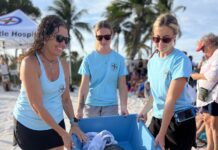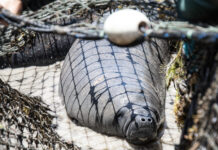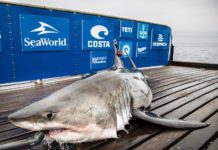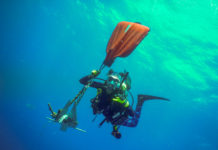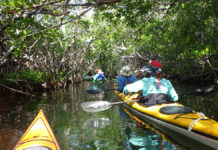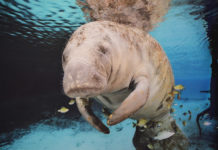The permit and bonefish are still a little chilly
[Editor’s Note: He’s baaaack! The Weekly’s columnist Bill Horn recently returned to the Florida Keys after spending many months, somewhere else, freezing near to death. He’s our backcountry, fly-fishing specialist, a legal eagle (especially when it comes to sanctuary regulations) and a dang good writer to boot. Welcome, Bill, and tight lines.]Sympathy will be hard to come by, especially from frost bitten Northerners, but Keys’ flats anglers are also suffering from the unusually harsh winter. Cold is relative but water temps stuck in the 60’s and days of biting north winds qualify here as hard winter. Michigan, Minnesota, and Wisconsin visitors chuckle at us as our winter, and cool waters, feel like high summer on the Great Lakes. But pursuit of our inshore glamour fish – bonefish, permit and tarpon – has been on hold since a procession of cold fronts started blowing through for the past month. The fish are out there and all that’s needed is a few days of light winds and sunshine to get angling into high gear.
Late February traditionally marks the onset of four-star flats fishing. Permit are already cruising about channel edges and bars in search of a tasty crab. Marathon Capt. Richard Keating recently put his clients on the black tailed devils but the persnickety fish were unwilling to bite in 64 degree water. When we see 70 for a couple of days, it will be a different story. The same is true for bonefish. All through the fall and early winter there was a noticeable uptick in our bonefish populations apparently beginning to rebound from the record fish killing cold of 2010. A bit of southeast wind and an 80 degree day or two will put hungry bonies on oceanside flats; gulf or bayside flats will likely stay too cool until later in March. Show the bonefish a shrimpy fly, or the real article, to get the bite.
Tarpon anglers are also eagerly watching weather reports. The year’s biggest “poons” – those well north of 100 pounds –will make their appearance with the first taste of spring. We found a few advance scouts earlier last week when summer-like weather finally arrived. Silver kings like to lay up in gulf and bay basins seeming to catch a few rays. A quiet stalk and a well-presented fly can entice subtle bites followed by all hell breaking loose at the end of the line. These spectacular fish love water temps in the high 70’s and a good way to enjoy early season action is to fish an afternoon falling tide that pulls sun warmed water off a big, dark grass flat.
For the inshore angler willing to try other species, there are other excellent winter options. The chill weather drives barracudas onto the grass flats to also soak up a bit of warmth. Looking like logs with pointed ends, the toothy silver and black ’cudas can be fooled into taking flies or green tube lures stripped or cranked as fast as possible. When hooked their speed and leaps always impress as do their dentures. Kids especially are wowed by barracudas.
Another choice is sharks – especially blacktips. They can be enticed to a boat using the filleted carcasses of jacks or ’cudas and when Mr. Jaws is in range they will take flies, plugs, cut baits and livies like lively blue runners. Blacktips are speedy athletic critters and often take to the air when hooked. Finally, upper Florida Bay within Everglades National Park is holding plenty of redfish not deterred by cool waters. While hunting reds species such as sea trout and black drum are also likely to be found.
A lot of fishy stuff is happening off the water. Legendary Keys angler and guide Stu Apte just released a new book: “My Life in Fishing.” It is replete with stories, and historical photos, from the halcyon days of flats fishing 60 years ago. For many anglers, Stu is “The Man” and the book shows why.
Concern over barracuda populations has the Florida Wildlife Commission conducting workshops on how to better manage the fishery. There seem to be fewer ’cudas than just a few years ago and excessive harvest may be a culprit. The first was held on Feb. 25 in Key Colony Beach. Next up are March 3 in Dania Beach and a March 5 statewide teleconference; see www.myfwc.com for details.
And major efforts continue to figure why our bonefish declined and what’s to be done to bring them back. The Bonefish Tarpon Trust just approved an aggressive set of new scientific research programs – with a $ 1.1 million price tag – to examine key factors impacting the fish. These include where do our bonefish spawn, where do ocean currents carry larval bonefish, where do our young bonefish live, is water quality suitable for the fish, do we share bonefish with Cuba and/or Mexico, and do our flats have enough food to bonefish. The plan is to answer these questions and take needed corrective actions. For more information check out www.bonefishtarpontrust.org.



















